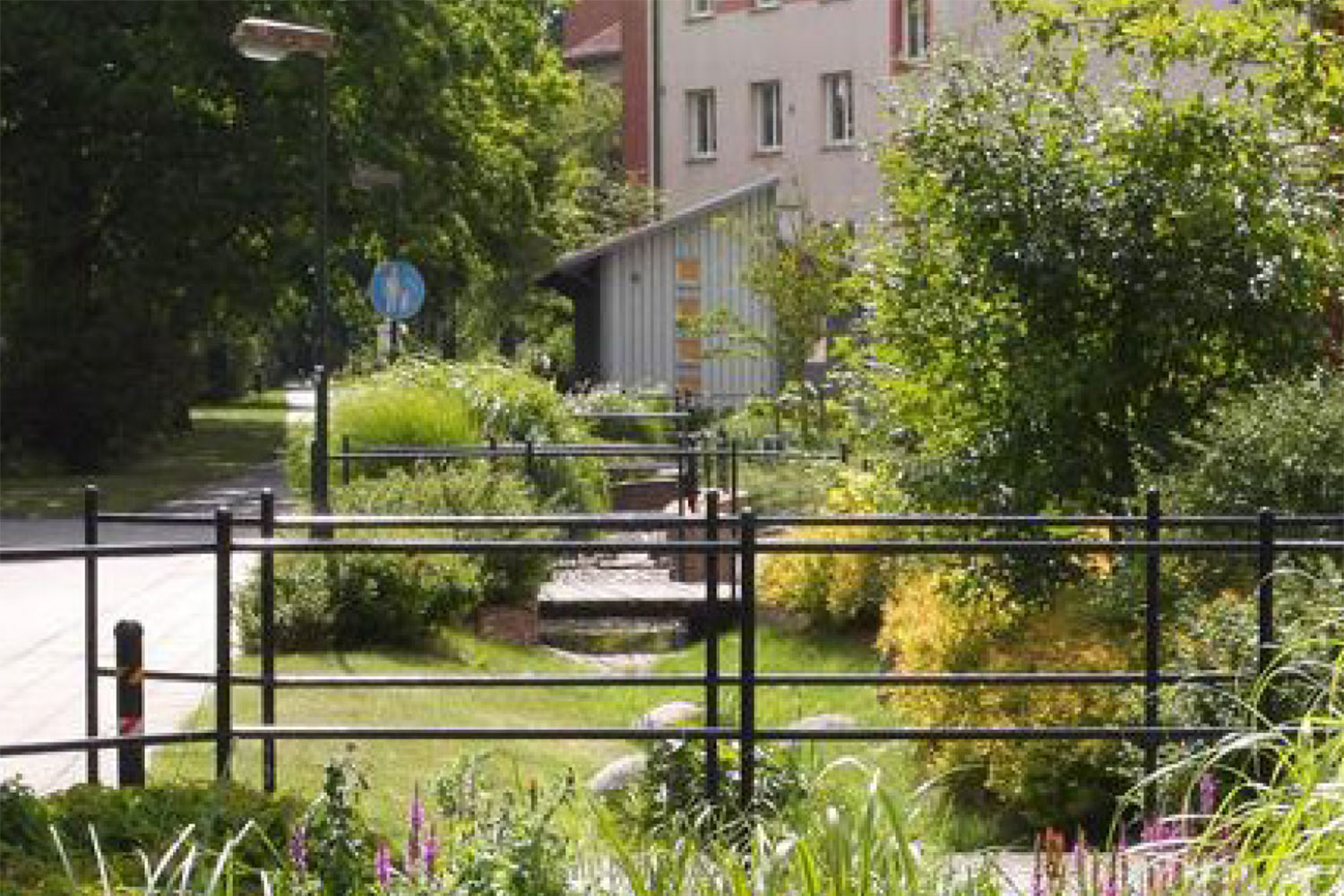In 1998, the Augustenborg district in Malmö, Sweden, initiated a renovation process through an urban renewal program at the community and household scales. They focused at the household level to improve energy efficiency, create green roofs, and improve access to recycling facilities. At the community level, they offered sustainable transportation alternatives (pedestrian and bicycling infrastructure, alternative fuels car-pooling and a light transit system); created new green open spaces, increased economic opportunities tied to the community members through investments from the local business community; promoted maintenance of the neighborhood and public participation; and reduced neighbors’ emigration rates.
STRATEGIC PARTNERS
MKB Housing Company, local businesses associations, NGOs, the European Union and the local government.
FINANCING
The project was funded by the MKB Housing Company (around £9.7 million), the Malmö local government (around £6.8 million), a local investment program initiative (around £2.3 million) and EU funding (around £600,000).
BARRIERS TO IMPLEMENTATION
ORGANIZATIONAL
The dynamics between individuals in the organizational structure was the major barrier to the implementation of the Augustenborg Ecodistrict Renewal project. Though residential involvement was necessary, it led to community discourse issues; louder individuals made their voices heard, whereas quieter individuals were often overlooked. Furthermore, serious concerns arose when the local housing company changed executive directors, who re-organized the company by replacing the project officer with a new one lacking the in-depth understanding of the project that his predecessor possessed. The housing company organization was not strong enough to withstand the will of the new executive director and the project lost legitimacy lower in the company’s hierarchy, leading to a project only anchored in the upper management. This resulted in the Augustenborg Ecodistrict Renewal project developing at a slower pace, losing legitimacy among its residents.
LESSONS LEARNED
CAPACITY
Often neighborhoods may lack the organizational skills to start this type of program or they may not have the required expertise or knowledge to envision, plan and conduct a sustainable renovation process of this magnitude. Neighborhood residents may lack the needed time to commit to these projects. Even when successful projects are implemented they are difficult to maintain over time.
EQUITY
Low-income neighborhoods may lack access to governmental resources or may be suspicious about governmental investments since these might increase taxes, rents and lead to gentrification and, eventually, to involuntary displacement.
COMMUNITY ENGAGEMENT
The engagement of the district’s 3,000 residents has resulted in increased pride in their part of town and a decline in graffiti and vandalism. Emigration from the district has been reduced by 20 percent with empty properties now being unusual within the district. Community engagement has resulted in an increase in Augustenborg, Sweden local election participation from 54 percent in 1998 to 79 percent in 2002.
ECONOMIC DEVELOPMENT
Residents have initiated several local enterprises and the unemployment rate has dropped by 15 percent. Through civic participation and community cooperation, it may be possible to increase prices of homes in the district and neighborhood quality of life.
GREEN ROOFS
The neighborhood project was able to create a 9,500-m2 publicly accessible Research Centre Botanical Roof Garden. Through this “demonstration project” it is possible to promote the use of green roofs among neighborhood residents.
STORMWATER MANAGEMENT
A water collection system collects 90 percent of the storm-water from roofs, roads and parking lots, as well as rainfall in natural trenches, ditches, pods, wetlands and reservoirs before having it flow into a conventional sewer system. Through projects like this it is possible to: 1) reduced the rainwater run-off; 2) stop flooding in the area; 3) improve the neighborhood environment and aesthetics through courtyard areas that also may be used for recreational purposes.
MOBILITY
It is possible to design and implement sustainable transportation programs at the neighborhood scale to improve air quality and school safety and to reduce congestion. Augustenborg organized a carpool system with electric vehicles and cars fueled by ethanol and biogas, promoted bicycling transportation and implemented two electric trains that transported 300,000 passengers in two years of service.
WASTE MANAGEMENT
Almost 70 percent of all waste is now recycled and they expect that 90 percent will be collected, recycled and re-used in the next months. They are using food waste to make fertile compost and biogas.
ENERGY EFFICIENCY
Energy efficiency improved by 20 percent as compared to 1995 (heating, hot water and electricity use). A solar energy project with 450 m2 solar panels, connected to the heating system, and a few photovoltaic systems in the industrial area provide a majority of the district’s energy. In spring 2009, a wind power plant was installed at the local school. As a result heat and water consumption has decreased by 25 percent and Augustenborg neighbors’ carbon footprint has diminished by 20 percent.
REFERENCES
- Ekostaden Augustenborg
- Eco-City Augustenborg
- Augustenborg: Green roofs and storm water channels
- Personal communication—Trevor Graham. Head of Sustainable Communities, City of Malmö 2012
Download


